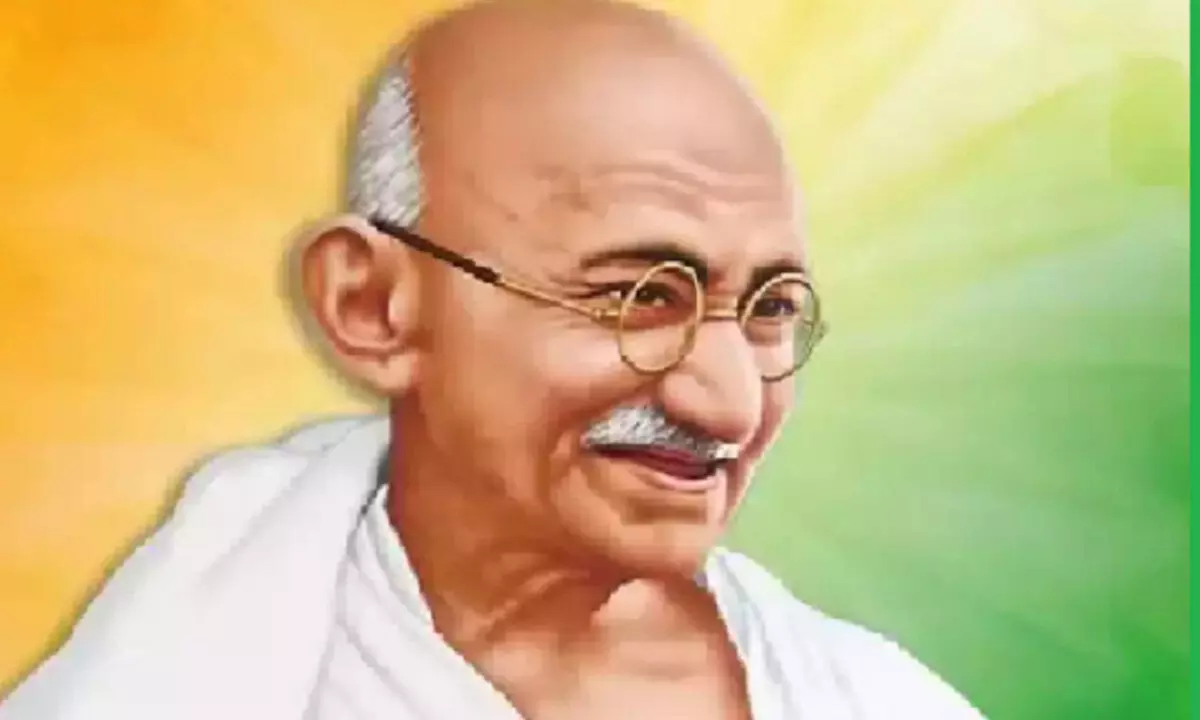What was Gandhi's take on convention of standing up when National Anthem sung?
Call it history revisited or something else! As India celebrated ‘Azadi ka Amrit Mahotsav’ (75th year of Indian Independence) with much fanfare, a new book published on that day and on the occasion, digs out so many unknown parts of India’s pre-Independence and post-Independence history that are still interesting, relevant and thought-provoking.
image for illustrative purpose

Call it history revisited or something else! As India celebrated 'Azadi ka Amrit Mahotsav' (75th year of Indian Independence) with much fanfare, a new book published on that day and on the occasion, digs out so many unknown parts of India's pre-Independence and post-Independence history that are still interesting, relevant and thought-provoking.
Very few would have possibly known that the first national flag in pre-Independent India with 'Vande Mataram' written on both sides of a thunderbolt (Bajro of Lord Indra) was weaved by Sister Nivedita. Nivedita herself explained: "It is for this that the Thunderbolt (Bajro) is multiplied, that it may be the symbol, not of a hero, but of a nation of heroes." And Vande Mataram was described as the mantra of 'nation of heroes.'
The book titled "Vande Mataram- Rup Rupantar" written by Dr Devajit Bandyopadhyay and published by Patrabharati, also offers answers (with well documented facts, figures and records) to some vexed questions like: Why and how 'Vande Mataram' was replaced with 'Janaganamanaadhinayaka'? What was Mahatma Gandhi's take on 'Vande Mataram'? How Pt Jawharlal Nehru approached Netaji Subhash Chandra Bose to get Tagore's feedback on 'Vande Mataram'? How Bose had actually approached Tagore on the same issue days before Nehru's letter? What was Mahatma Gandhi's take on the convention of standing up when the National Anthem is sung and what he himself used to do? Which was the first and only time HMV released a music record without the company logo on the disc and why was that?
In what can spark off a fresh controversy, the book quotes Gandhi's biographer (Ibid, page 99): "He (Gandhiji) himself purposely kept seated, because he has learnt that the Indian culture did not require standing as a mark of respect when any national song or Bhajan was sung. It was an unnecessary importation from the West." This refers to Gandhi's prayer meeting in Kolkata on August 29, 1947, which started with 'Vande Mataram'.
The book delves at length on how style of tune of singing Vande Mataram changed and evolved over the years in theatre, jatra, movies and other performances. Research done by the author reveals that 'Vande Mataram' has been sung in as many as 146 different styles and tunes. This is notwithstanding what Mahatma Gandhi said. "There should be one universal notation for 'Vande Mataram' if it was to stir millions; it must be sung by millions in one tune and one mode. After all, national songs could only be two or three. But they should all have their common notation. It was up to the Shantiniketan authorities or some such authoritative society to produce an acceptable notation," says Gandhi.
The book also touches upon how different political parties used 'Vande Mataram' - either in its pure form or with a dash of sarcasm to lash out at political opponents. "This is one of my dream projects and I had worked on it for long. Each and every fact presented in the book are well documented, recorded and cannot be challenged. 'Vande Mataram' was initially part of Bankim Chandra Chattopadhyay's masterpiece-Ananda Mutt (first revolution of the Sannyasis). It was first sung by music guru Jadu Nath Bhattacharjee. From Jadu Nath Bhattacharjee to A R Rehman and Jeet Ganguly- Vande Mataram has traversed a long way and passed the test of time, still maintaining its acceptance, recognition and vibes, despite the controversies. My endeavour has been to trace this long and most fascinating journey of 'Vande Mataram' between the two covers," says Bandyopadhyay.

